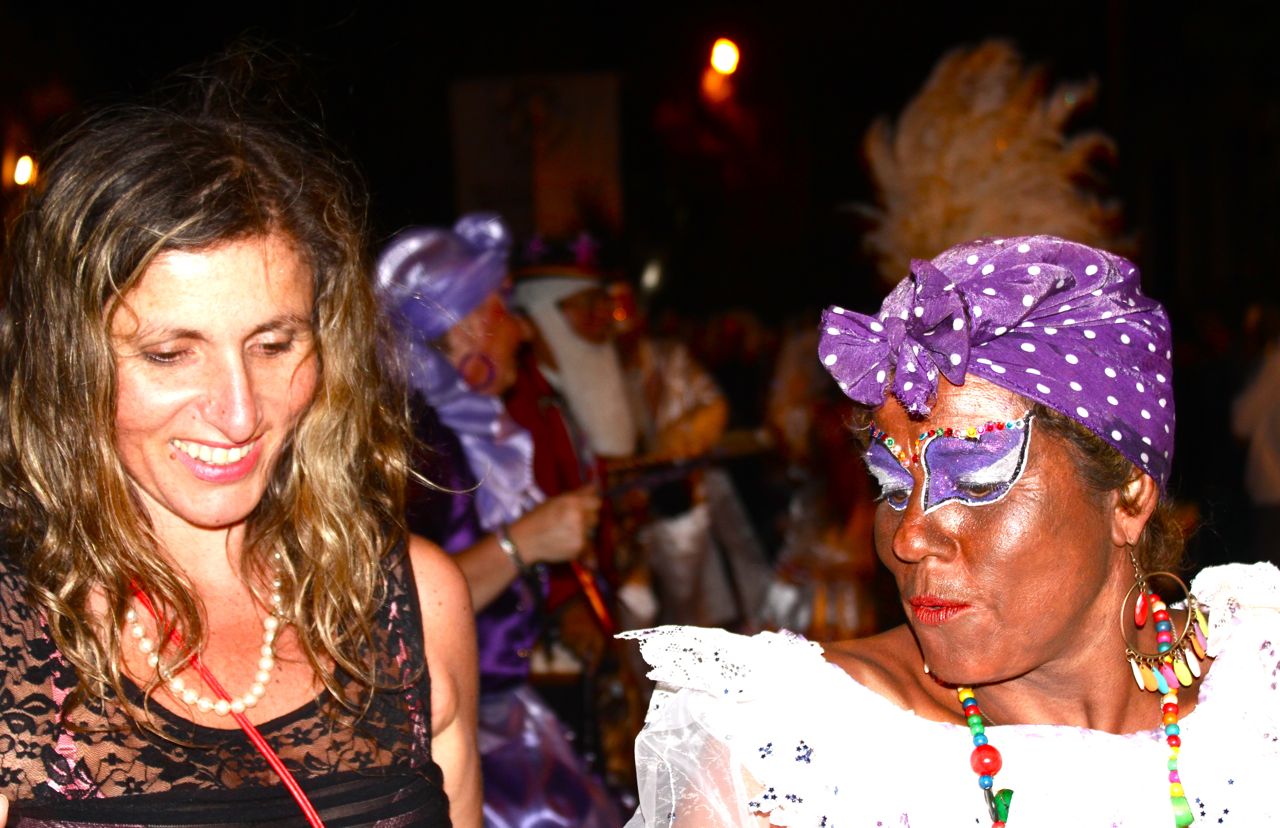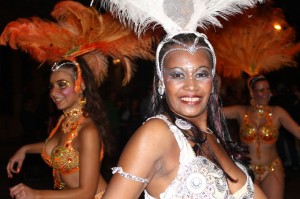 My favorite part of the Uruguayan carnival, which lasts over a month, are the llamadas. Originally a drumming call between African slaves, the llamadas are a parade similar to carnival parades in Brazil, except the music there is called candombe.
My favorite part of the Uruguayan carnival, which lasts over a month, are the llamadas. Originally a drumming call between African slaves, the llamadas are a parade similar to carnival parades in Brazil, except the music there is called candombe.
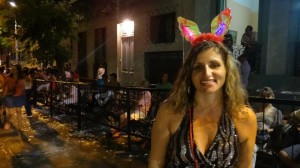 Candombe is a rhythm played with three different kinds of drums. The combination of the drums` different rhythmic patterns is what makes candombe. A combination of music and dance, the candombe culture is Uruguay´s most unique and traditional musical expression.
Candombe is a rhythm played with three different kinds of drums. The combination of the drums` different rhythmic patterns is what makes candombe. A combination of music and dance, the candombe culture is Uruguay´s most unique and traditional musical expression.
Every year, more tourists and TV crews from all over the world are discovering the Llamadas, which were mainly attended by local people only a few years ago.
I am fortunate enough to live in the very heart of Montevideo´s most traditional black neighborhood, so that the llamadas happen down the street from my house.
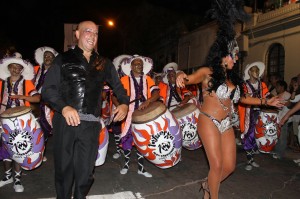 The llamadas are mainly about feeling the power of the drum and just letting go. There is nothing like hearing dozens, hundreds of candombe drums being played at the same time, as the players walk along Isla de Flores street, the female dancers move their hips to the rhythm, and the Uruguayan people celebrate their African heritage.
The llamadas are mainly about feeling the power of the drum and just letting go. There is nothing like hearing dozens, hundreds of candombe drums being played at the same time, as the players walk along Isla de Flores street, the female dancers move their hips to the rhythm, and the Uruguayan people celebrate their African heritage.
One thing most tourists probably don´t know is that there is a little place called Tangó, on a one-block pedestrian street called Curuguaty, where the party goes on after the parade is over, with some of the greatest candombe musicians playing a mixture of jazz, candombe, and popular Uruguayan music up until sunrise the next day.
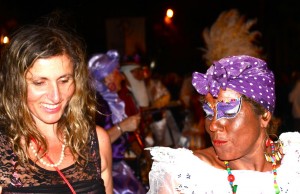 Unfortunately, there aren´t many music bars in Uruguay where one can commonly expect to hear candombe, but there is a little, cool and relaxed placed called La Conjura, where one can often hear some of the local virtuosos play, either for free or for a very small cover charge.
Unfortunately, there aren´t many music bars in Uruguay where one can commonly expect to hear candombe, but there is a little, cool and relaxed placed called La Conjura, where one can often hear some of the local virtuosos play, either for free or for a very small cover charge.
There is much more to the Uruguayan carnival, there is a big competition between groups doing different types of shows and musical numbers, which can be best experienced by attending Teatro de Verano or one of the other stages where these carnival groups perform, such as the Velódromo Municipal.
For anyone interested in culture, music, partying, and cultural traditions, the llamadas and the carnival during the month of February are the best time to visit Montevideo and the rest of Uruguay. In fact, we also have some very spectacular Brazilian carnival-style parades happening in some towns around the Brazilian border, such as Artigas or Rivera.
A taste of the llamadas from the 2012 parade:
Photos by Joaquín Carvajal, Cristina Nigro, VP.
